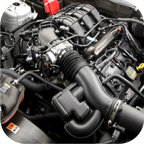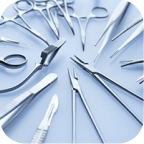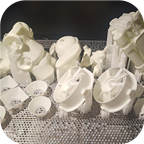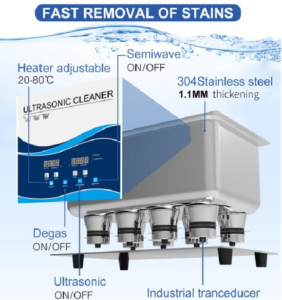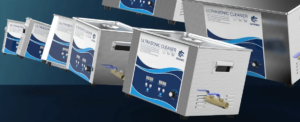Ultrasonic Cleaning vs. Traditional Cleaning Methods: Which One Is Best?
Browse Volume:219 Classify:Support
Cleaning precision instruments and delicate parts is essential in various industries such as healthcare, electronics, automotive, and manufacturing. Over the years, different cleaning methods have been developed, each designed to tackle specific challenges. Among these methods, ultrasonic cleaning has gained significant popularity due to its efficiency and effectiveness. However, when compared to more traditional cleaning techniques like manual scrubbing, chemical baths, or steam cleaning, ultrasonic cleaning offers distinct advantages. Understanding the differences between ultrasonic cleaning and other common cleaning methods can help businesses and individuals make more informed decisions when selecting the most appropriate technique.
What is Ultrasonic Cleaning?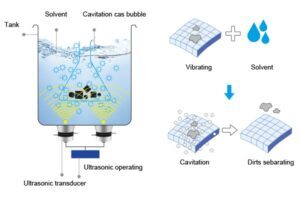
Ultrasonic cleaning relies on high-frequency sound waves (typically in the range of 20 to 400 kHz) to create microscopic bubbles within a liquid. These bubbles expand and collapse rapidly in a process called cavitation, which generates powerful shock waves that help dislodge dirt, debris, and contaminants from the surface of an object. The process is extremely effective for cleaning delicate and intricate items, as it reaches even the tiniest crevices without causing any damage.
The ultrasonic cleaning process is highly efficient for cleaning items that are otherwise difficult to clean using traditional methods. It is especially useful in industries where precision and hygiene are critical, such as medical equipment sterilization, jewelry cleaning, and electronics maintenance.
Common Traditional Cleaning Methods
While ultrasonic cleaning is a highly specialized method, several traditional cleaning techniques have been used for decades. These methods include manual cleaning, steam cleaning, chemical cleaning, and mechanical brushing. Each of these methods has its own advantages and limitations, which we will explore further.
1. Manual Cleaning
Manual cleaning is one of the oldest and most widely used methods. This involves physically scrubbing or wiping an object with cleaning tools, such as brushes, sponges, or cloths, along with a cleaning solution. It can be effective for cleaning flat surfaces and larger, less intricate items.
However, manual cleaning can be time-consuming and inefficient when dealing with small parts or objects with complex shapes. It can also be labor-intensive, requiring human intervention for each item, making it less suitable for high-volume cleaning operations.
2. Steam Cleaning
Steam cleaning uses high-temperature steam to loosen dirt and grime from surfaces. It is commonly used for cleaning large surfaces, such as floors, walls, and machinery, and is effective for sanitizing and disinfecting items.
While steam cleaning can provide a deep clean, it has limitations when it comes to intricate items or those with delicate components. The heat and moisture involved in steam cleaning can cause damage to sensitive materials like electronics, textiles, and certain metals. Additionally, steam cleaning often requires significant setup time, and the results can be inconsistent depending on the operator’s skill.
3. Chemical Cleaning
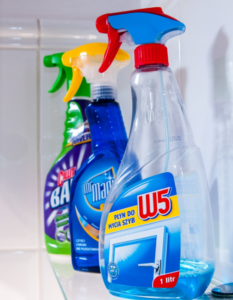
Chemical cleaning involves the use of specialized cleaning solutions to break down dirt, oils, and contaminants. This method is commonly used in industries like automotive, aerospace, and manufacturing, where heavy grease or oils need to be removed from machinery and parts.
Although chemical cleaning can be effective at removing stubborn contaminants, it poses some risks. Harsh chemicals may cause corrosion or damage to certain materials, and there is also the environmental impact of chemical disposal. Additionally, the process often requires significant safety precautions, as some cleaning agents can be toxic or flammable.
4. Mechanical Brushing

Mechanical brushing uses rotating brushes to physically scrub surfaces and remove contaminants. It is commonly used in industrial cleaning applications, where large parts or machinery need to be cleaned quickly and efficiently.
This method is effective for removing loose dirt or debris but may not be as efficient for deep cleaning small parts or intricate surfaces. Additionally, mechanical brushing can cause wear and tear on delicate items, and it is often not effective at cleaning hidden crevices or internal parts of complex items.
Ultrasonic Cleaning vs. Other Methods: Key Differences
Each cleaning method has its own advantages, but ultrasonic cleaning stands out due to its unique ability to provide a deep, precise clean without physical contact or harsh chemicals. Let’s examine the key differences between ultrasonic cleaning and traditional cleaning techniques.
1. Precision and Reach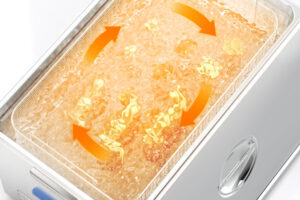
Ultrasonic cleaning is unmatched in its ability to reach into small, intricate spaces. The cavitation bubbles produced during the ultrasonic cleaning process are tiny enough to penetrate deep into crevices, joints, and internal cavities that would be impossible to clean using manual or mechanical methods. Traditional cleaning methods, such as manual scrubbing or steam cleaning, may miss hard-to-reach areas, leaving contaminants behind.
In contrast, methods like chemical cleaning or mechanical brushing rely on surface contact, making it difficult to clean delicate or complex shapes without causing damage. Ultrasonic cleaners, on the other hand, are gentle enough to clean even the most fragile items, such as jewelry or delicate medical instruments, without causing any harm.
2. Speed and Efficiency
Ultrasonic cleaners are known for their speed and efficiency. Traditional cleaning methods can take significant time and effort. Manual cleaning, for instance, requires physical labor and multiple cleaning cycles to achieve the desired result. Steam cleaning and chemical cleaning also require time for setup, application, and rinsing.
Ultrasonic cleaning, on the other hand, typically only takes a few minutes to clean even the most heavily contaminated items. Once the object is placed in the ultrasonic cleaner and the settings are adjusted, the cleaning process happens automatically, significantly reducing the time and labor required.
3. Environmental Impact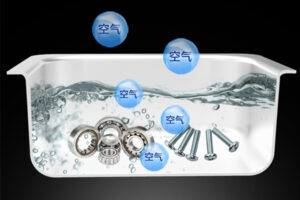
In terms of environmental impact, ultrasonic cleaning tends to be more eco-friendly compared to other methods. Traditional methods, such as chemical cleaning, often involve harsh cleaning agents that can be harmful to both the environment and human health. These chemicals may require special disposal methods to prevent contamination.
Ultrasonic cleaning, by contrast, often requires only water and mild biodegradable cleaning solutions, minimizing the environmental footprint. Additionally, ultrasonic cleaning reduces the need for single-use disposable items, such as cloths or brushes, that can contribute to waste.
4. Safety and Risk of Damage

When cleaning delicate items, safety is a significant concern. Harsh methods, such as chemical cleaning, can cause corrosion, discoloration, or degradation of sensitive materials. Similarly, steam cleaning can damage electronic components or cause warping in plastic parts due to the high temperatures involved.
Ultrasonic cleaning, being a non-abrasive method, poses little risk of physical damage. The cavitation process relies on microscopic bubbles to dislodge contaminants, making it a safer option for cleaning sensitive items, such as circuit boards, lenses, and medical instruments. There is also less chance of operator error, as the process is automatic and requires minimal human intervention.
5. Cost Considerations
The initial investment for an ultrasonic cleaning system can be higher than the costs of manual or chemical cleaning tools. However, ultrasonic cleaning systems are highly durable and can save businesses significant time and labor costs in the long run. Additionally, ultrasonic cleaners are often more efficient in terms of water and energy usage, leading to lower operational costs.
While methods like steam cleaning or chemical cleaning may have lower upfront costs, the need for ongoing cleaning agents, steam generation, and manual labor can add up over time. Ultrasonic cleaners may offer better long-term value, especially for high-volume cleaning operations.
Choosing the Right Cleaning Method for Your Needs
When deciding between ultrasonic cleaning and other traditional methods, several factors should be considered:
- Type of Item: For delicate, intricate, or sensitive items, ultrasonic cleaning is often the best choice. Items like jewelry, medical instruments, and electronic components benefit from ultrasonic cleaning’s gentle yet effective approach.
- Level of Contamination: If the items to be cleaned have heavy, tough contaminants, methods like mechanical brushing or chemical cleaning may be more appropriate. However, ultrasonic cleaning can effectively handle moderate contamination levels without the need for abrasive methods.
- Budget: While ultrasonic cleaning systems may have a higher upfront cost, they can save money in the long run due to reduced labor costs and faster cleaning times. Consider the long-term cost-effectiveness when making a decision.
- Environmental Impact: For environmentally-conscious businesses, ultrasonic cleaning offers a greener alternative, as it reduces the need for toxic chemicals and disposable cleaning tools.
Final Thoughts
Ultrasonic cleaning offers numerous advantages over traditional cleaning methods, including its ability to clean delicate items efficiently, its precision in reaching intricate areas, and its environmentally friendly nature. However, traditional methods like steam cleaning or chemical cleaning may still be more suitable for specific applications, particularly when dealing with large-scale cleaning or heavy contaminants. By understanding the unique benefits and limitations of each method, you can choose the right cleaning technique to meet your needs and ensure the highest level of cleanliness and safety for your items.
References:
- “Advances in Ultrasonic Cleaning: Applications and Benefits,” International Journal of Industrial Cleaning, 2021.
- “Comparison of Ultrasonic Cleaning and Traditional Methods for Medical Equipment,” Journal of Healthcare Engineering, 2020.
- “Ultrasonic Cleaning in the Electronics Industry: A Review,” Journal of Applied Surface Science, 2022.
 Granbo Sonic
Granbo Sonic





